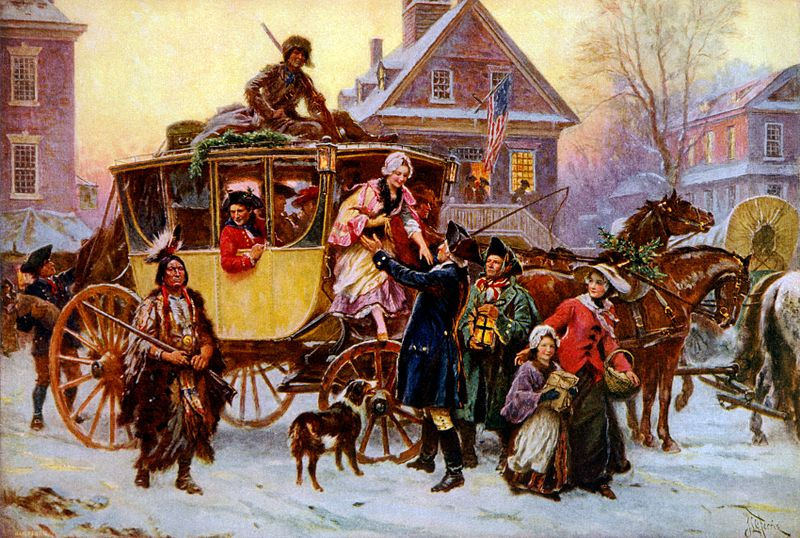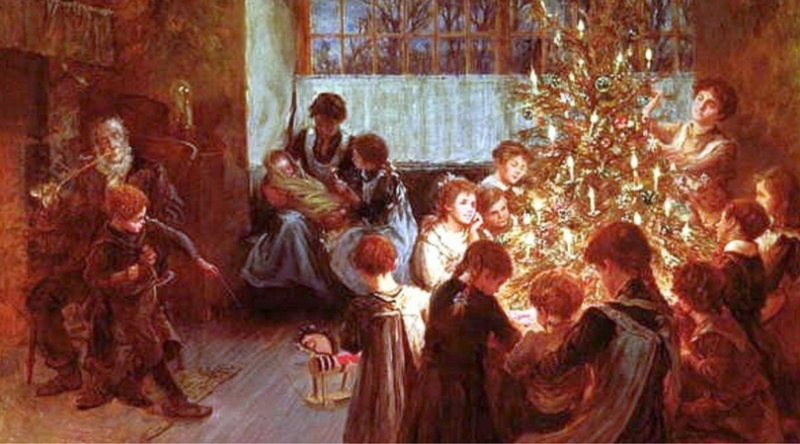Christmas in early America

Christmas was a complicated holiday in early America. Due to its pagan origins and the boisterous nature of the festivities, many people who hold Puritan beliefs forbade Christmas. Other European immigrants arrived and continued to practice their native customs. In the 1600s, the Dutch immigrated to New York City carrying Sinter Klaas. In the 1700s, German immigrants brought their holiday tree customs. Each community held its own unique celebrations.
American Christmas did not begin to take shape until the early 1800s. Washington Irving wrote a series of stories about a wealthy English landowner who invites his employees to dinner. Irving liked the idea of people from all walks of life coming together for a festive holiday. So he told a story about old Christmas traditions that had been lost but had been resurrected by this wealthy landowner. The idea began to take root in the hearts of the American people as a result of Irving's story.
An Account of a Visit from St. Nicholas was written by Clement Clark Moore in 1822 for his daughters. The Night Before Christmas is now a household name. It was through it that the notion of Santa Claus as a cheery man flying through the air on a sleigh became widely accepted. Later, in 1881, a Coke-a-Cola advertisement commissioned the artist Thomas Nast to create a drawing of Santa. He designed a chubby Santa Claus who is surrounded by working elves and has a wife named Mrs. Claus. Following this, the American public's perception of Santa Claus as a jolly, fat, white-bearded man dressed in a red suit was solidified.







